Camellia Oil For Skin: Benefits, Uses, And Side Effects
This lightweight oil is all you need to step up your skincare regimen!

Image: Shutterstock
Camellia oil is the skin care secret of the Japanese geishas. It is loaded with fatty acids and antioxidants. You can use camellia oil for skin hydration and rejuvenation. It helps you keep the skin glowing, radiant, protected, and supple. And that is why camellia oil is widely used in many skin care products. If you are keen to keep your skin nourished and try camellia oil, read this article to learn more about its benefits, side effects, and how to use it. Scroll down.
 Know Your Ingredient: Camellia Oil
Know Your Ingredient: Camellia OilWhat Is It?
A lightweight, non-greasy oil obtained from Camellia japonica and Camellia oleifera plants.
What Are Its Benefits?
It can moisturize and soothe the skin. It may also fight the signs of aging.
Who Can Use It?
It is suitable for all skin types. However, it is highly recommended for women over 25.
How Often?
It can be used every day, but usage may vary according to the requirements of the skin.
Caution
It can be toxic if ingested or if it comes in contact with the eyes. Avoid it if you have eczema, psoriasis, or fungal infection.
In This Article
What Is Camellia Oil?
Camellia oil is a lightweight oil cold-pressed from the seeds of the Camellia japonica and Camellia oleifera plants. It is also known as Tsubaki oil, teanut oil, or tea seed oil. It has been used for ages by Japanese women to nourish their hair and skin. Camellia oil is composed of fatty acids like oleic acid, palmitic acid, and linoleic acid (1). It also contains many antioxidants like catechinsi Chemicals possessing powerful antioxidant properties that are widely present in tea, cocoa, and berries. , tocopherolsi Organic compounds with vitamin E activity that exhibit antioxidant properties and help protect cells from free radicals. , gallic acid, and tocotrienol (2).This oil is widely used by Japanese women to maintain their hair health. Using camellia oil for hair helps strengthen the tresses, adds shine to it, and can help manage hair damage. However, its benefits extend beyond hair care.

 Did You Know?
Did You Know?The fatty acids and antioxidants in camellia oil can also benefit your skin. Read on to learn how.
Key Takeaways
- Camellia oil is one of the most popular skin care ingredients due to its antioxidant, anti-inflammatory, anti-aging, and moisturizing properties.
- Since ancient times, Japanese women have used camellia oil to care for their hair and skin.
- If you want to make the most of this oil, use it pure or mix it with other oils and natural ingredients.
Benefits Of Camellia Oil For Face Skin
- Camellia oil moisturizes skin: Moisturization is one of the key steps in any skin care routine. The fatty acids in camellia oil help moisturize and nourish the skin by reducing water loss from the skin (transepidermal water loss) (3). This fast-absorbing oil is a super hydrator that results in soft and smooth skin.
- Camellia oil reduces wrinkles: Camellia oil has anti-aging properties. Scientists found that camellia oil not only reduces transepidermal water loss but also induces the synthesis of type I skin collagen (a matrix protein found in the second layer of the skin that is responsible for skin firmness) (4). This prevents the formation of new wrinkles and evens out fine lines.
- Camellia oil has antioxidant properties: The oil is loaded with antioxidants that scavenge free radicals and help prevent skin damage due to environmental stressors, UV-A rays, and an unhealthy lifestyle (5). In a study, microemulsionsi Stable, transparent mixtures of surfactant, water, and oil are used to increase drug penetration through biological membranes. of camellia oil showed high antioxidant or oxygen radical scavenging ability (6). The antioxidant properties of camellia oil also make it an excellent sunscreen for normal to sensitive skin.
- Camellia oil soothes the skin: Camellia oil has anti-inflammatory properties (7). It can be applied to the facial skin to reduce inflammation, roughness, and redness to help heal and soothe inflamed skin and provide the healthiest glow to your face.
- Camellia oil reduces dark spots: Camellia oil is rich in antioxidants, which may aid in reducing dark spots. The oil nourishes the skin and helps with moisture retention, potentially leading to improved skin texture and tone. A study conducted to assess the effects of the camellia flower extract showed that it possesses anti-inflammatory and other protective properties that not only reduce dark spots and pigmentation but are also beneficial in managing skin conditions like atopic dermatitis and acne (8). The same study also showed that the extract of this flower also increased the production of collagen, maintaining skin elasticity and protecting it against pollutant-induced skin damage.
A blogger shared her experience of using camellia oil for her skin in her blog. She wrote, “ I can safely say that not only does it keep my skin hydrated throughout the day, it also gives me the assurance that it is protecting my skin from the sun too (i).”
These are the various benefits of using camellia oil for skin. But how to use it to see the maximum effect as quickly as possible? Find out in the next section.
How To Use Camellia Oil On Face
Here are 7 ways you can use camellia oil on your facial skin to reduce wrinkles, make your skin plump, and enhance skin glow:
1. Pure Camellia Oil
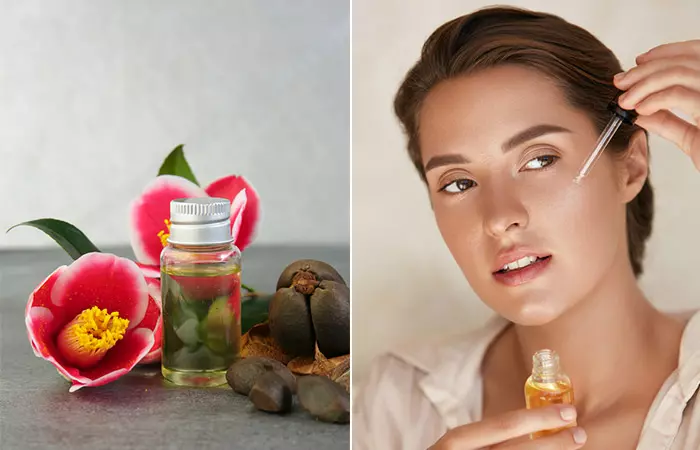
What You Need
- 1-2 drops of pure camellia oil from a trusted brand
How To Use
- Take 1-2 drops of camellia oil in your palm.
- Rub your palms together to warm the oil.
- Place your palms on your cheeks, chin, and forehead by pausing for a second or two to let the skin absorb the oil.
- Gently massage your face in circular motions for 2 minutes.
- Do this 20 minutes before applying makeup on clean skin. You can also apply it before going to bed.
 Quick Tip
Quick Tip2. Camellia Oil And Olive Oil
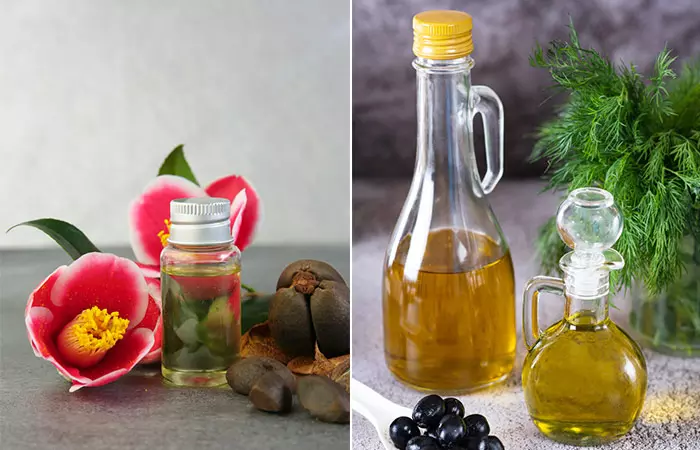
What You Need
- 1-2 drops of pure camellia oil
- 6-7 drops of olive oil
- Roller or two cold spoons
How To Use
- Mix camellia oil and olive oil with your palms.
- Rub your palms together.
- Place your palms all over your face and neck.
- Gently massage your face with a roller or use the back of two cold spoons to massage your face. Use upward motions.
- Do this for 2-3 minutes.
- If you have very dry skin, do this every day. Otherwise, you may do it every alternate day.
3. Camellia Oil And Aloe Vera
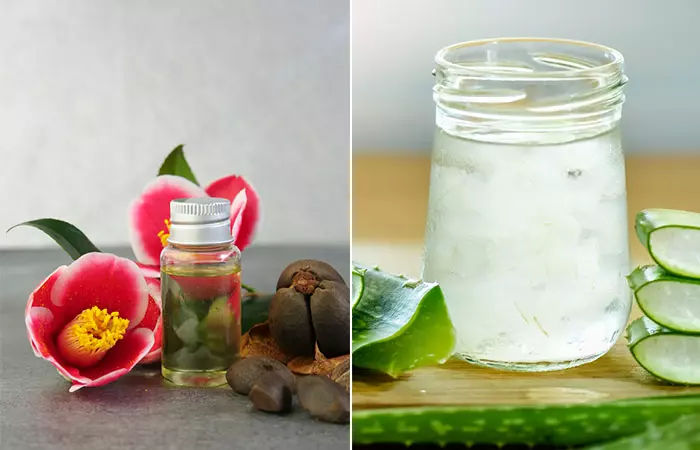
What You Need
- 1-2 drops of pure camellia oil
- 1-2 tablespoons of aloe vera gel
How To Use
- Take 1-2 tablespoons of aloe vera gel.
- Add 1-2 drops of camellia oil to it.
- Mix well and apply to your face and neck.
- Wait for 15 minutes.
- Massage for 2 minutes.
- Do this every day an hour before going to bed.
4. Camellia Oil And Vitamin E Capsule
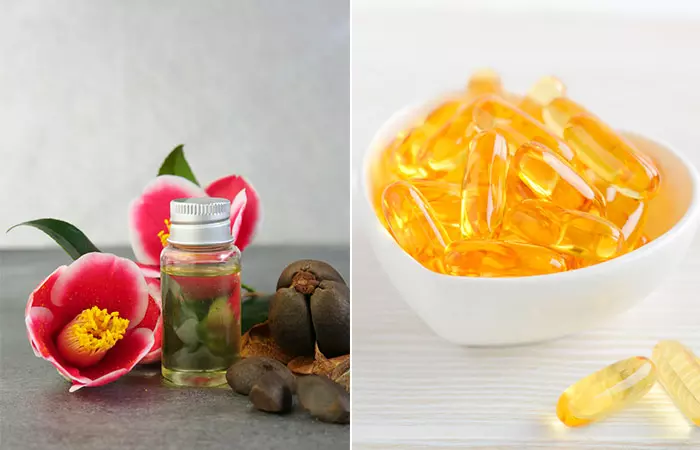
What You Need
- 1 vitamin E capsule
- 1-2 drops of camellia oil
- A clean towel
- Lukewarm water
How To Use
- Use a sanitized needle to poke the jelly capsule.
- Squeeze out the vitamin E oil into a small bowl.
- Add 1-2 drops of camellia oil to it and mix well.
- Apply the mixture to your face and massage for 2-3 minutes.
- Dip the towel into the lukewarm water. Squeeze out the water.
- Place the towel on your face and relax for 5-10 minutes.
- Pat your face with the towel.
- Do this once in two days.
5. Camellia Oil And Milk
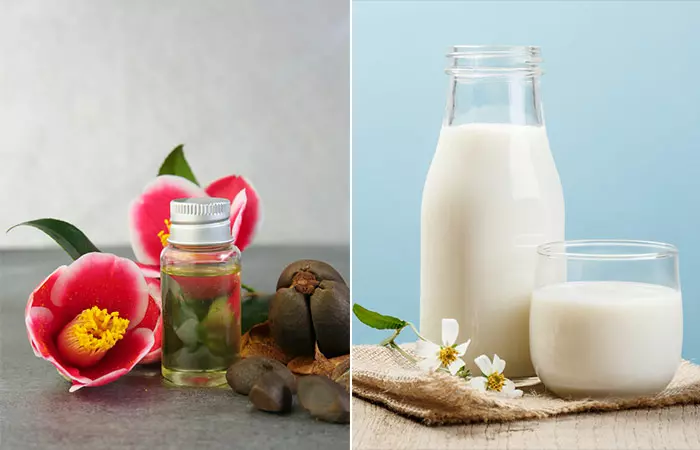
What You Need
- 2 tablespoons of pasteurized cow milk (or almond milk)
- 1-2 drops of camellia oil
How To Use
- Mix the camellia oil with milk in a bowl.
- Apply it to your face using a face pack applicator brush.
- Wait for 15 minutes.
- Use room temperature water to wash your face.
6. Camellia Oil And Rose Water
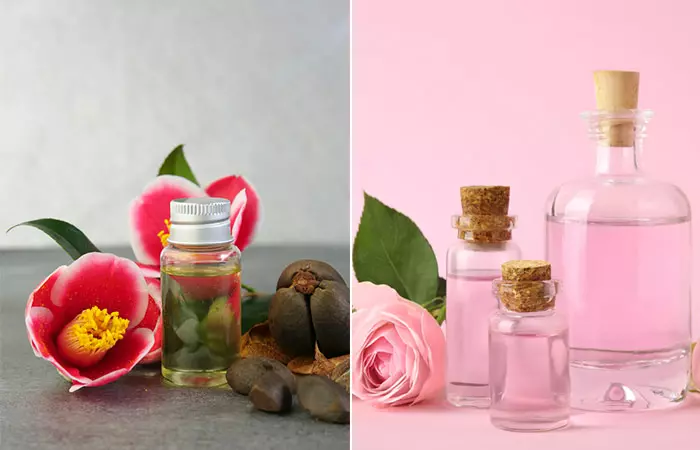
What You Need
- 50 ml of rose water
- 5 drops of camellia oil
- 50 ml of water
- An empty and clean spray bottle
How To Use
- Pour the rosewater into the spray bottle.
- Add camellia oil and water. Shake well.
- Use it as a moisturizing skin toner in your everyday skin care routine.
7. Camellia Oil And Fuller’s Earth
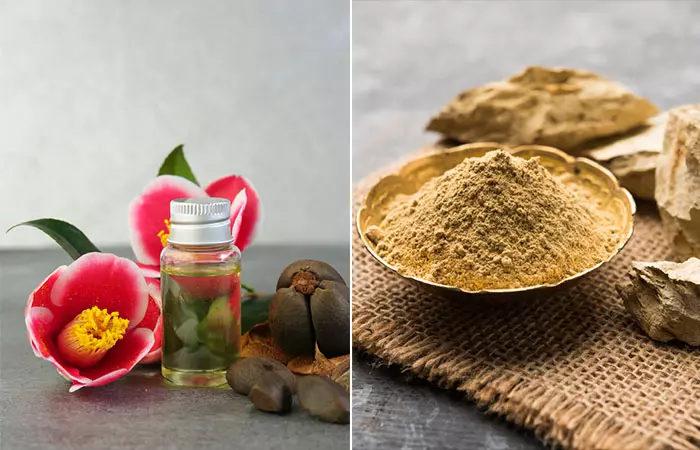
What You Need
- 2 drops of camellia oil
- 2 tablespoons of Fuller’s earth
- 1 teaspoon of orange peel
- 2 tablespoons of milk
- Water, as required
How To Use
- Mix all the ingredients in a bowl.
- Apply the mixture all over your face.
- Wait for 15 minutes.
- Spray water on your face and use circular motions to massage your face.
- Wash your face with room temperature water.
- Pat your face dry and apply a moisturizer.
- Do this once or twice a week to get bright and glowing skin.
These are the 7 ways you can use camellia oil on your face. But it is important to know if the oil has any side effects. Check the next section.
Are There Any Side Effects?
Camellia oil is mostly safe to use on skin, nails, and hair. However, anecdotal evidence suggests it can be toxic if you ingest it. Hence, be careful when using it in your face masks or toners. Avoid the eye area when you apply the mask that contains camellia oil. Close your eyes and lips when you use the camellia oil toner spray (or use cotton to apply the toner).
Also, if you have cystic acne or are in the process of treating a skin condition like eczema, psoriasis, or fungal infections, avoid using pure camellia oil. Talk to your dermatologist to know if you can use camellia oil at all.
If you do not have any skin condition, we suggest you do a patch test with the oil at the back of your jaw to see if you are sensitive to it. Do not use it if you develop redness, itching, and swelling after 10-20 minutes. Wash off immediately and apply calamine lotion or aloe vera gel to soothe the area.
Infographic: Tips For Growing Camellia
Camellia oil is a cold-pressed oil used to nourish the skin and hair. It is extracted from the seeds of the Camellia japonica and Camellia oleifera plants. Though it is native to eastern and southern Asia, you can grow these plants at home if you follow the right gardening tips.
Check out the infographic below to learn some tips for growing camellia.
Some thing wrong with infographic shortcode. please verify shortcode syntax
Camellia oil has been a staple in Japanese beauty trends and traditional skincare for centuries. The unrefined nature of camellia oil ensures that it retains its natural properties, making it a cosmetic oil of choice for many. High in antioxidants and several nutrients, the benefits of using this plant-based oil for your skin include skin nourishment and reduction in inflammation, dryness, and wrinkles, promoting elasticity, radiance, and overall skin health. You can use pure camellia oil or in combination with aloe vera, milk, olive oil, or fuller’s earth to get smooth, plump and healthy skin. People with eczema, psoriasis, fungal infections, or any skin condition must consult a dermatologist for more information before using it.
Frequently Asked Questions
Does camellia oil clog pores?
Camellia oil is a light oil and non-comedogenic, meaning it does not clog pores. This makes it suitable for acne-prone skin as it does not contribute to breakouts. However, if you have oily skin and use more than the recommended quantity, there are chances of clogging the pores. For the best benefits, make sure you source pure oil from reputed suppliers. Use cold-pressed oil that is free of additives.
What does camellia oil smell like?
Camellia does not have a distinct smell, and most people like it for that reason.
Is camellia oil an essential oil?
Yes, camellia is an essential oil as it is extracted from the seeds of the Camellia japonica and Camellia oleifera plants.
Illustration: Camellia Oil For Skin: Benefits, Uses, And Side Effects
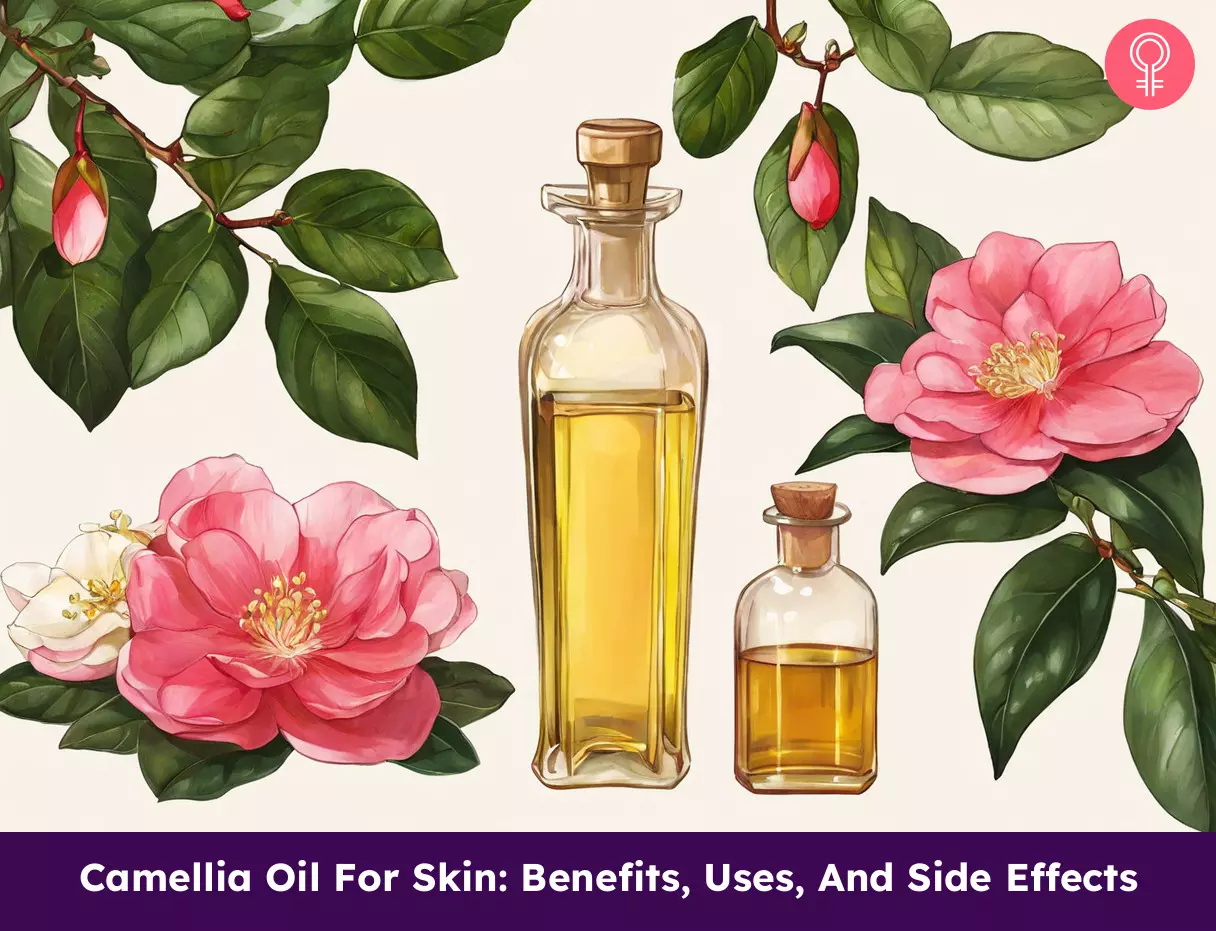
Image: Stable Diffusion/StyleCraze Design Team
The benefits of camellia oil for your hair and skin are plenty! Check out the video below to learn how this natural oil with zero side effects can help you achieve healthier hair and skin.
Personal Experience: Source
StyleCraze's articles are interwoven with authentic personal narratives that provide depth and resonance to our content. Below are the sources of the personal accounts referenced in this article.
i. DIY: Homemade Hair Serum using Camellia Oil and using it neat for my skinhttps://myorganicjourney11.blogspot.com/2011/08/diy-homemade-hair-serum-using-camellia.html
References
Articles on StyleCraze are backed by verified information from peer-reviewed and academic research papers, reputed organizations, research institutions, and medical associations to ensure accuracy and relevance. Read our editorial policy to learn more.
- Lipid Characteristics of Camellia Seed Oil
https://pubmed.ncbi.nlm.nih.gov/31178460/ - Detection of Antioxidant Phytochemicals Isolated from Camellia japonica Seeds Using HPLC and EPR Imaging
https://pubmed.ncbi.nlm.nih.gov/32516915/ - Effect of Camellia japonica oil on human type I procollagen production and skin barrier function
https://pubmed.ncbi.nlm.nih.gov/17386986/ - Skin Ageing: Natural Weapons and Strategies
https://www.ncbi.nlm.nih.gov/pmc/articles/PMC3569896/ - Antioxidant activity and bioactive compounds of tea seed (Camellia oleifera Abel.) oil
https://pubmed.ncbi.nlm.nih.gov/16448182/ - Antioxidant and Moisturizing Effect of Camellia assamica Seed Oil and Its Development into Microemulsion
https://www.mdpi.com/2079-9284/5/3/40 - Anti-inflammatory activity of Camellia japonica oil
https://pubmed.ncbi.nlm.nih.gov/22449705/ - Protective effects of Camellia japonica flower extract against urban air pollutants
https://www.ncbi.nlm.nih.gov/pmc/articles/PMC6350298/
Read full bio of Dr. Priya Gill
Read full bio of Arshiya Syeda
Read full bio of Ramona Sinha
Read full bio of Monomita Chakraborty





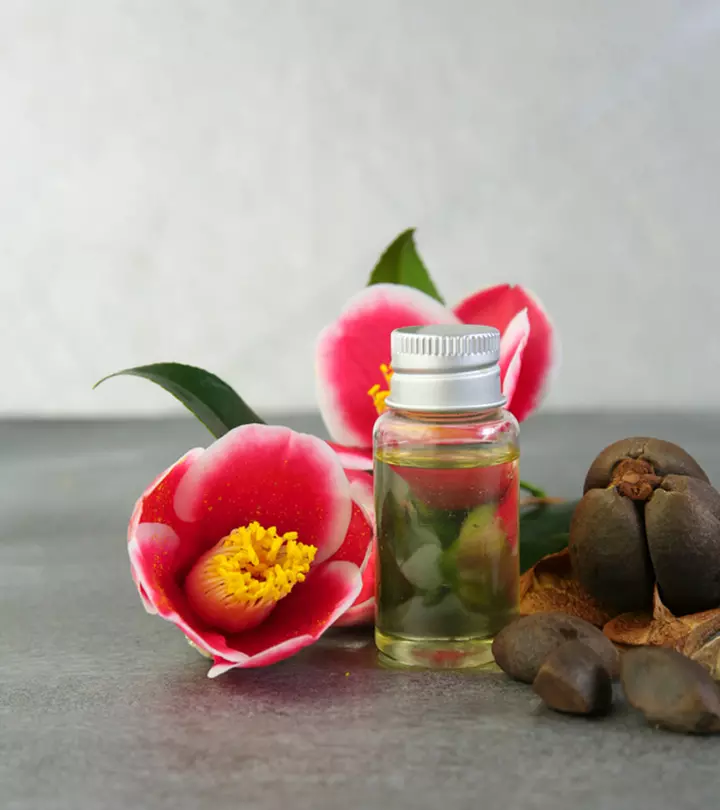

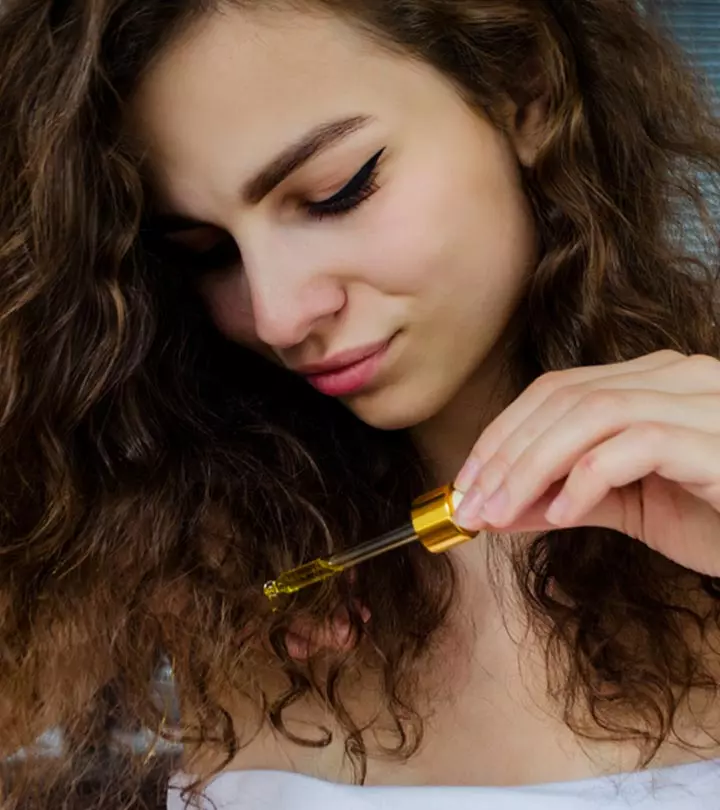
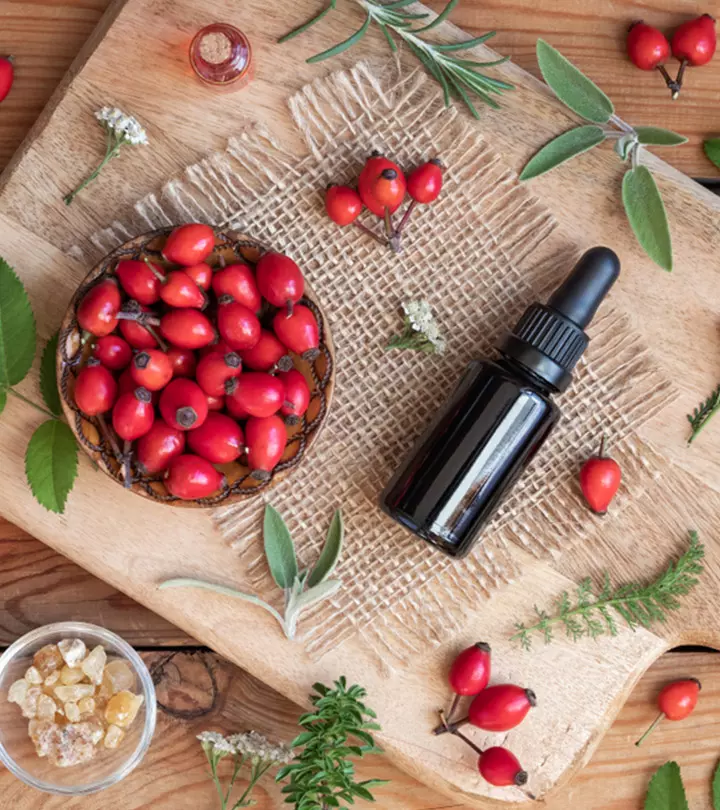
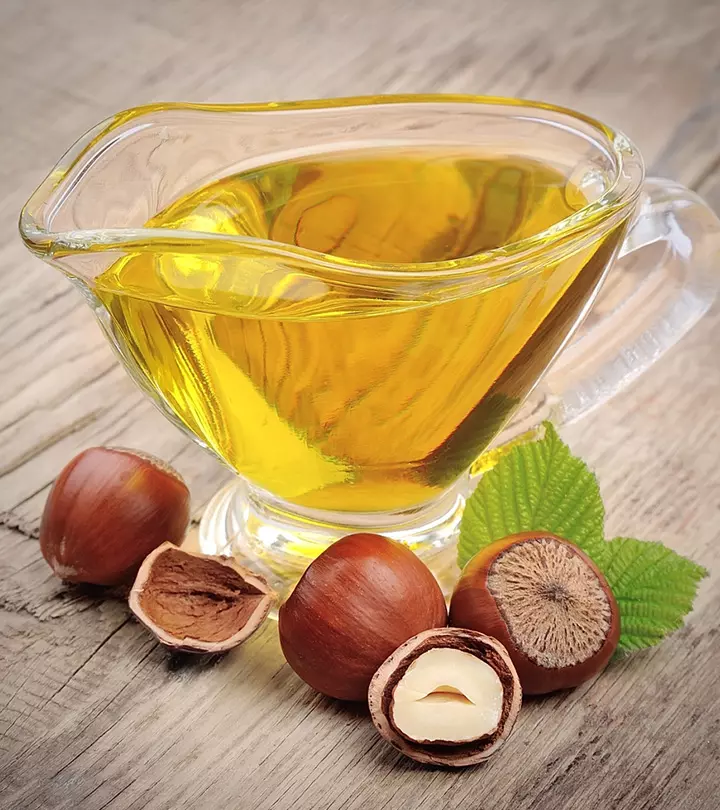


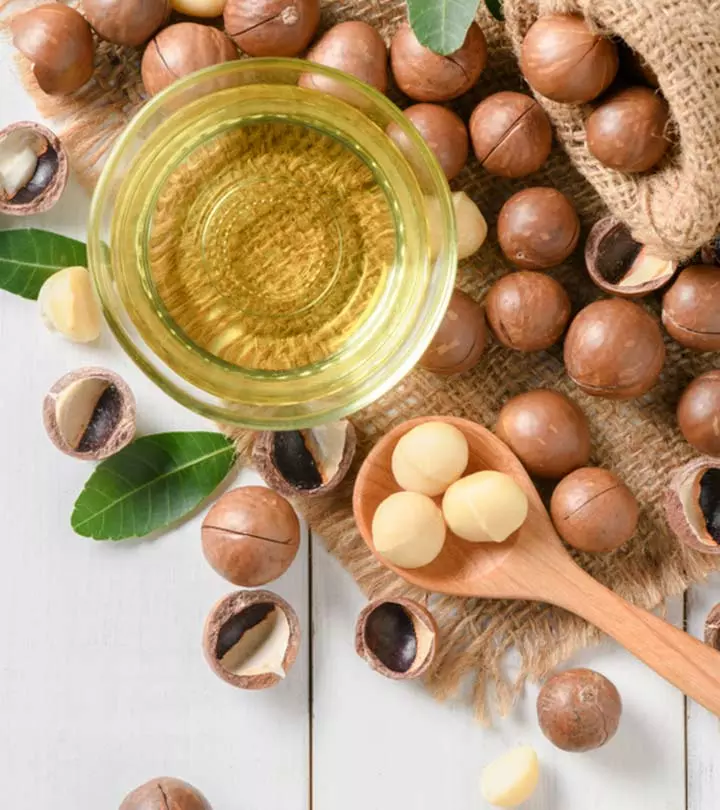

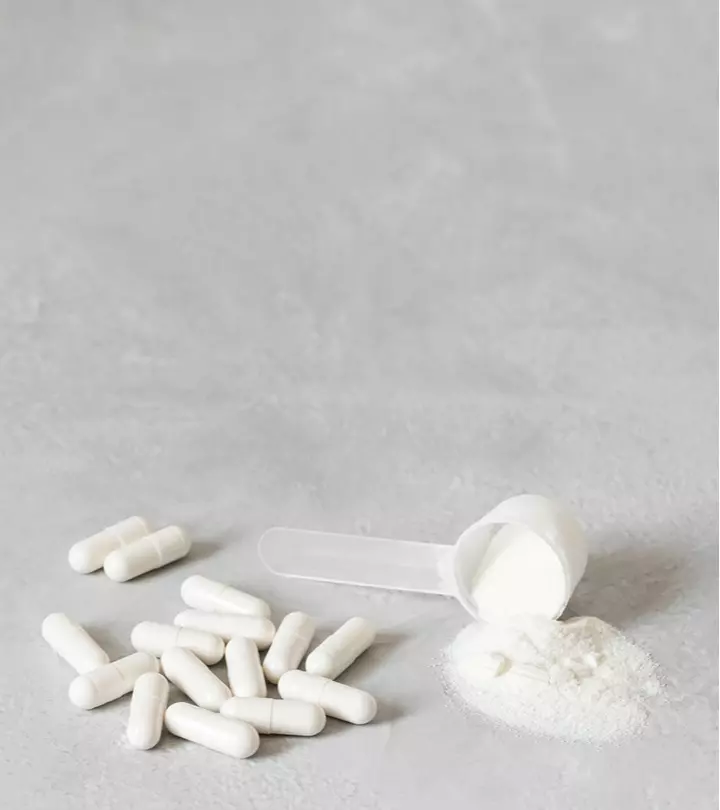
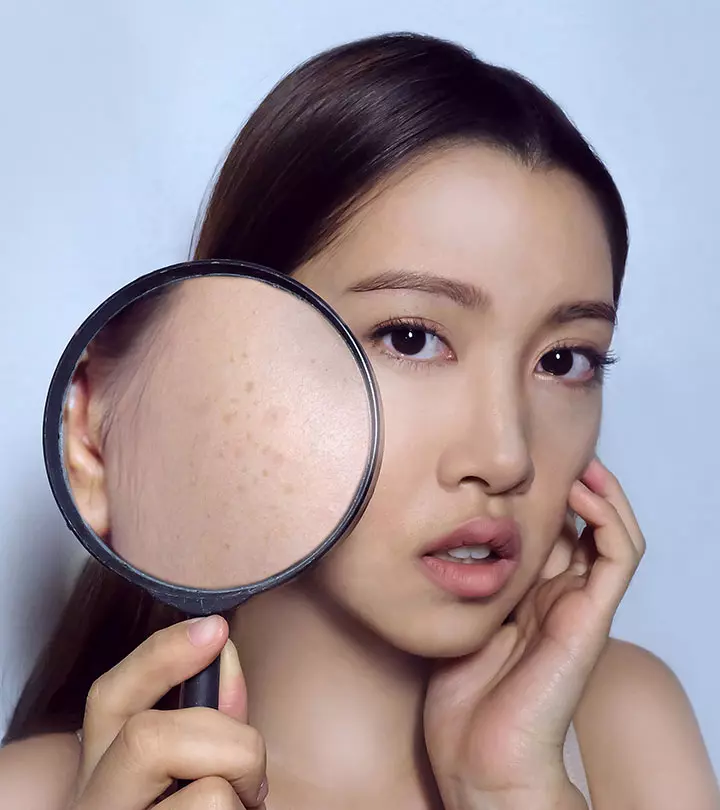
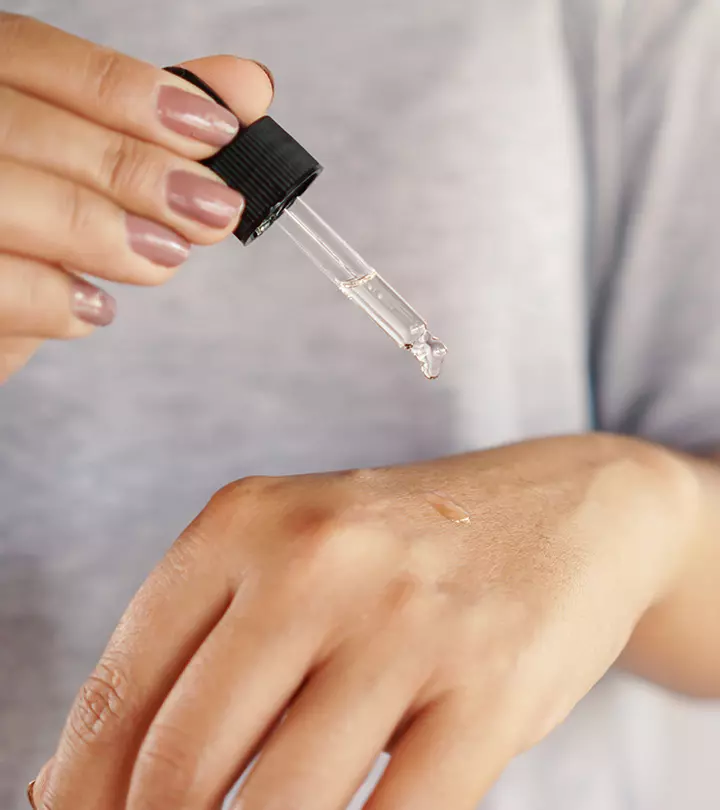


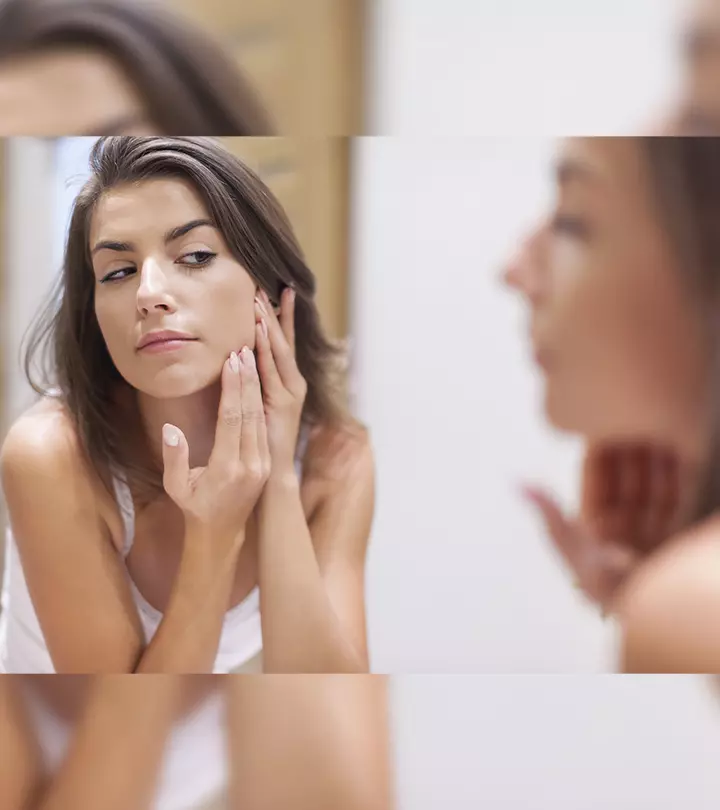

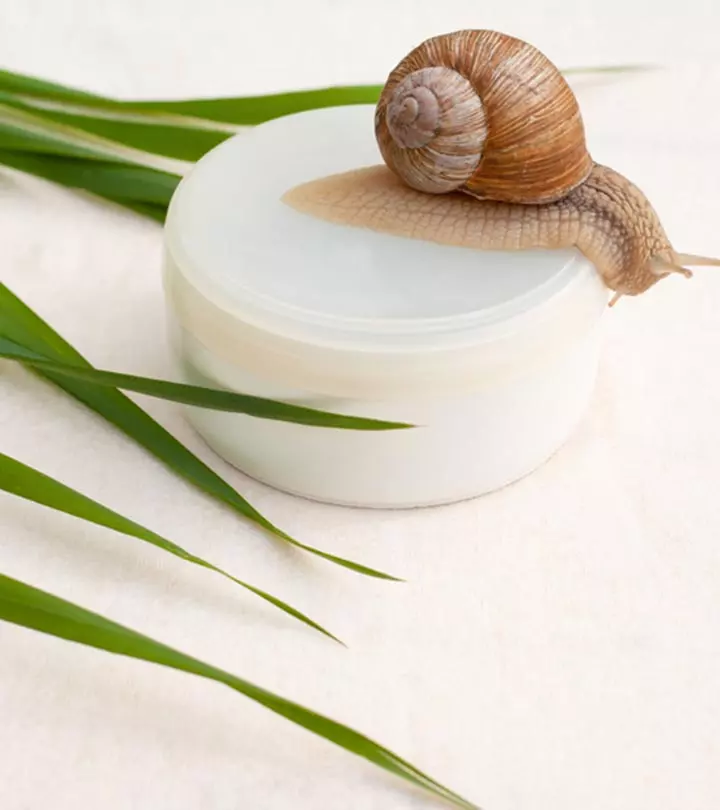



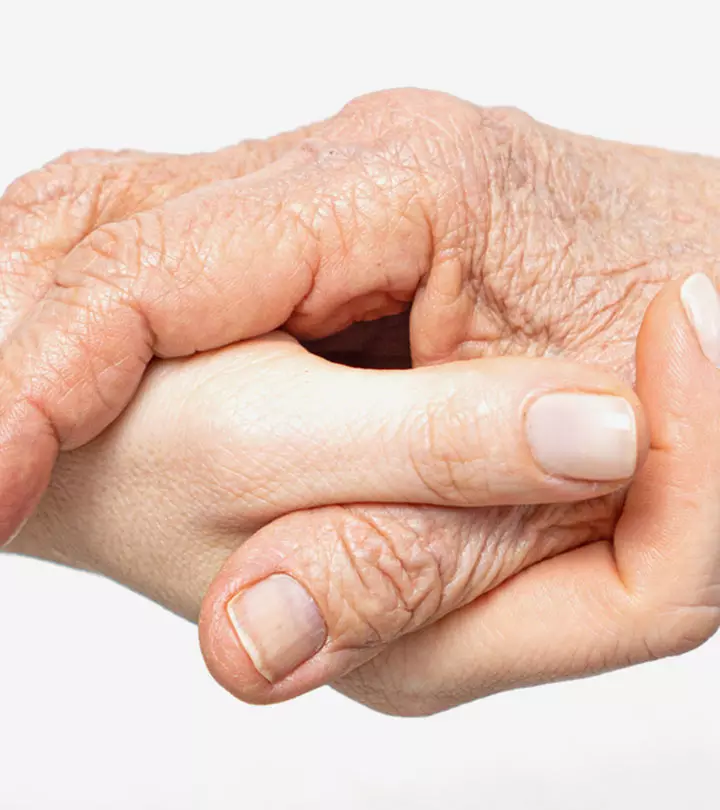
Community Experiences
Join the conversation and become a part of our empowering community! Share your stories, experiences, and insights to connect with other beauty, lifestyle, and health enthusiasts.